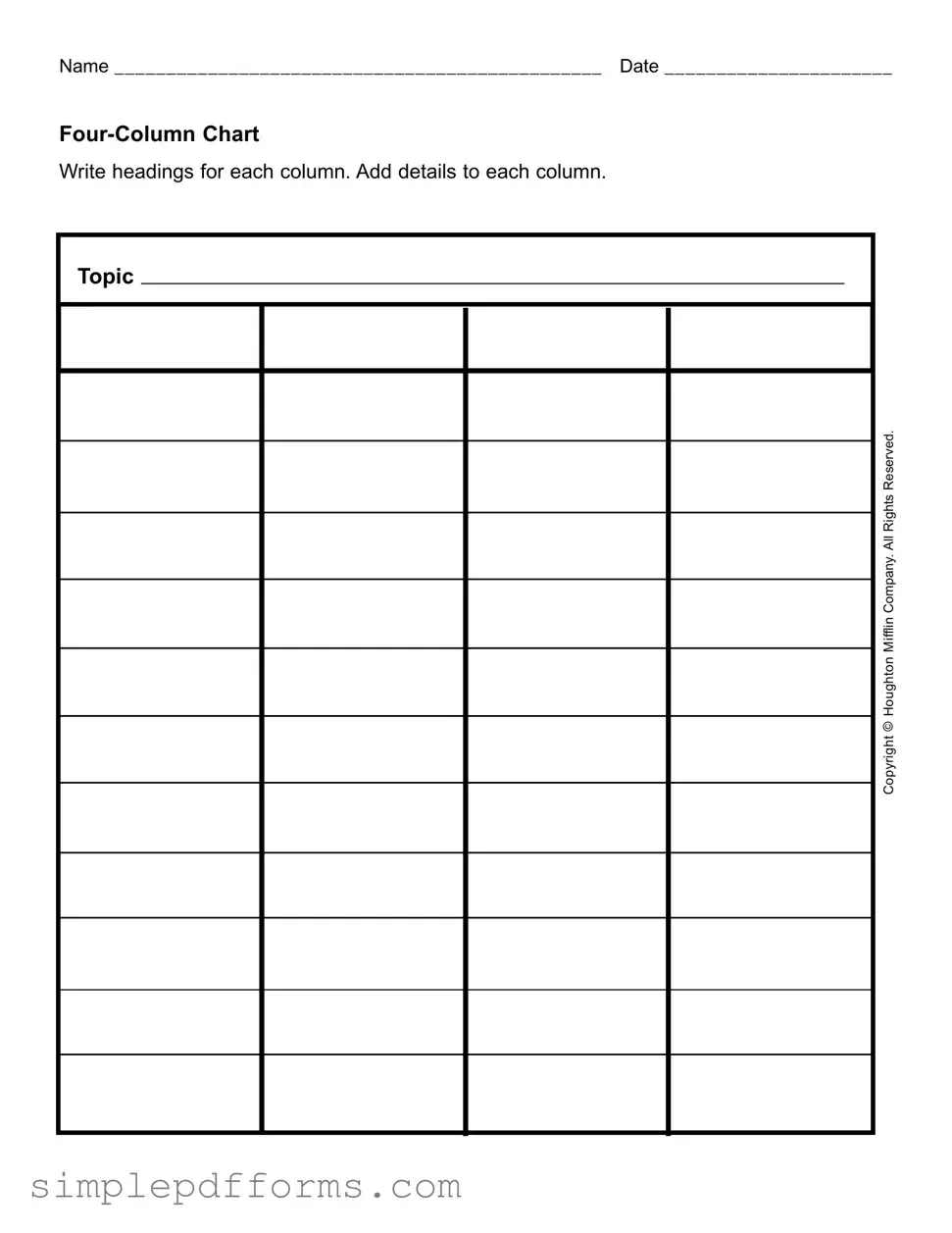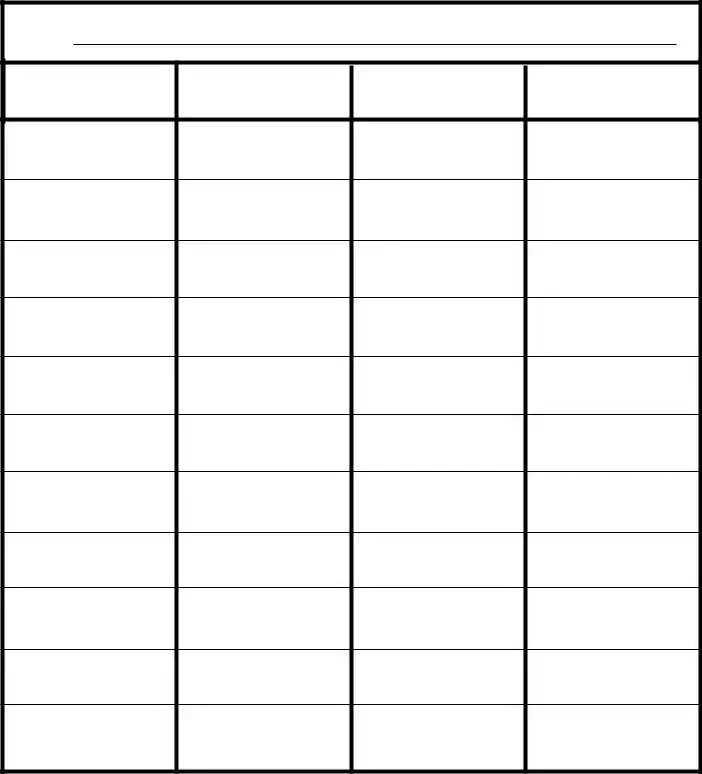When tackling the Four Column Chart form, individuals often encounter a few common pitfalls that can hinder their ability to effectively organize and present information. One frequent mistake is neglecting to write clear and concise headings for each column. Headings serve as a roadmap for the reader, guiding them through the information. Without well-defined headings, the chart can quickly become confusing, leaving readers unsure of the data's relevance.
Another common error is failing to ensure that the details added to each column are relevant and specific. It’s easy to get carried away and include extraneous information that does not directly relate to the topic at hand. This can dilute the effectiveness of the chart, making it harder for others to grasp the essential points. Remember, clarity is key when presenting information.
Some individuals also overlook the importance of consistency in formatting. When filling out the chart, it’s crucial to maintain a uniform style across all columns. For instance, using different fonts, sizes, or colors can distract from the content and create a disjointed appearance. Striving for a cohesive look not only enhances readability but also conveys professionalism.
Additionally, many people fail to proofread their entries before submitting the form. Typos and grammatical errors can undermine the credibility of the information presented. Taking a moment to review the content for accuracy can prevent misunderstandings and ensure that the chart effectively communicates its intended message.
Another mistake involves not utilizing the full potential of the four columns. Each column is an opportunity to explore different facets of the topic. Some users may restrict themselves to superficial details, missing the chance to delve deeper into analysis or implications. Expanding on each aspect can provide a richer understanding of the subject matter.
Moreover, a lack of organization can plague many submissions. Filling out the chart in a haphazard manner can lead to a chaotic presentation of information. It’s beneficial to plan the layout before writing, ensuring that each column flows logically into the next. This not only aids in comprehension but also enhances the overall impact of the chart.
Finally, people sometimes forget to include their names and the date on the form. While this may seem like a minor detail, it is essential for accountability and reference. Including this information helps others track the document's origin and relevance over time. Neglecting such basic elements can lead to confusion in collaborative settings.

